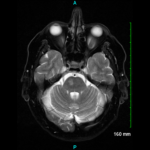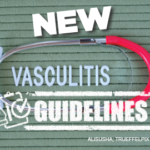The guideline is intended for what’s practical and accessible at the present time in the U.S. As you know, the use of ultrasound for this purpose requires some skills, expertise and familiarity with this technique, which is currently not as widespread in the U.S. as in European countries. For this reason, we mention in the guideline that in centers where appropriate training and expertise exist, temporal artery ultrasound may be a useful and complementary tool for diagnosing GCA. We hope that as this diagnostic modality is used more often, radiologists and rheumatologists alike, in more centers develop the skills and expertise in using and interpreting ultrasound. The recommendations don’t preclude the use of ultrasound; we hope to start using it eventually.
From the guideline—Recommendation: For patients with newly diagnosed GCA, we conditionally recommend obtaining noninvasive vascular imaging to evaluate large vessel involvement.
Q: There is a conditional recommendation for obtaining noninvasive imaging for large vessel involvement, which I don’t think people are doing routinely. Is this a recommendation for universal screening, and by what modality would you recommend it?
Dr. Maz: I think you’re right about the current prevalent practice. Outside of large academic centers, imaging of large vessels is not routinely considered. This is also a conditional recommendation. This idea is based on knowledge that large vessel involvement can be present with or without overt clinical manifestations. The implications of this are significant, especially for chronic management and monitoring of disease and its large vessel complications.
On the other hand, the guideline also states that in patients without large vessel involvement on initial screenings, it may or may not be necessary to perform routine or repeated monitoring with vascular imaging. Of course, it depends on clinical manifestations and symptoms while patients are followed longitudinally.
Large vessel imaging can also help with the diagnosis of GCA in the absence of cranial manifestations or in lieu of biopsy or when we are faced with a negative biopsy, but we are still concerned that patients have signs and symptoms of large vessel disease that require further evaluation, diagnosis and management.
As to what kind of modality to use, both magnetic resonance angiography (MRA) and computed tomography angiography (CTA) are readily available and can be used for this purpose. We’re not recommending conventional catheter-based angiogram for routine screening because it is more invasive, and MRA or CTA may provide the needed information.


